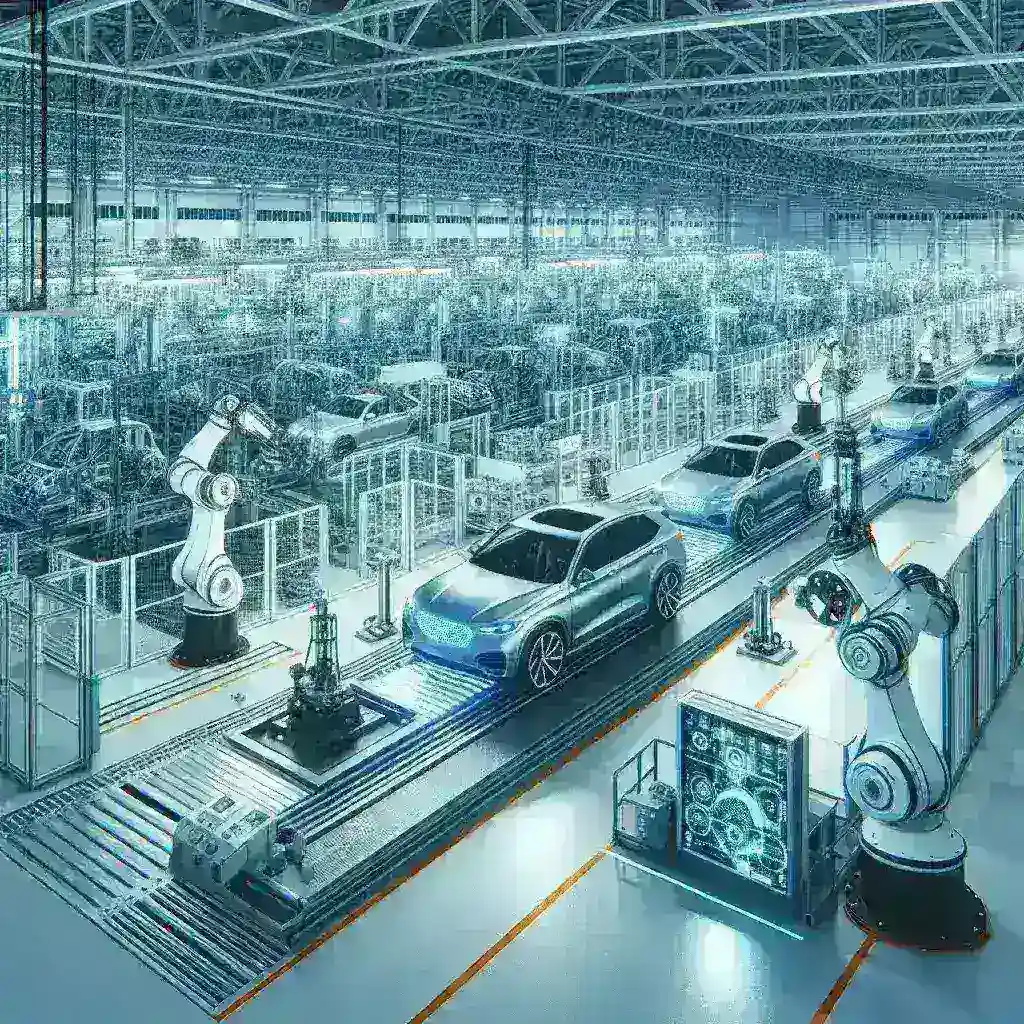Tesla Testing AI-Powered Fleet Diagnostics in U.S. Gigafactories
In recent years, the automotive industry has seen a rapid evolution, particularly with electric vehicles (EVs) taking center stage. Among the front-runners of this revolution is Tesla, a company renowned for its innovative approach to technology and sustainability. One of its latest endeavors is the testing of AI-powered fleet diagnostics across its U.S. Gigafactories. This initiative aims not only to improve vehicle performance but also to streamline operations and enhance customer satisfaction.
The Vision Behind AI-Powered Diagnostics
The core objective of Tesla’s testing is to harness the power of artificial intelligence (AI) to achieve a deeper understanding of fleet health and operational efficiency. Traditional methods of diagnostics often rely on manual checks and basic software tools, which can be time-consuming and prone to human error. Tesla’s AI diagnostics promise to revolutionize this process by providing real-time insights and predictive maintenance capabilities.
Historical Context and Development
Tesla’s journey into AI diagnostics is built on its long-standing commitment to innovation. The company has consistently invested in research and development, focusing on integrating cutting-edge technology into its manufacturing processes. The introduction of AI diagnostics aligns with Tesla’s mission to create a sustainable future by optimizing its fleet and reducing downtime.
Understanding AI Technology in Fleet Management
Artificial Intelligence encompasses various technologies, including machine learning, data analysis, and predictive analytics. For fleet diagnostics, these technologies can analyze vast amounts of data generated by vehicles, identifying patterns and potential issues before they become critical.
- Machine Learning: This enables the system to learn from historical data and improve its predictive capabilities over time.
- Data Analysis: By analyzing sensor data from vehicles, the AI can provide insights into vehicle health, performance, and maintenance needs.
- Predictive Analytics: This allows the AI to foresee potential issues, enabling proactive maintenance and reducing the risk of breakdowns.
Advantages of AI-Driven Fleet Diagnostics
The integration of AI-powered diagnostics in Tesla’s Gigafactories presents numerous advantages:
- Enhanced Efficiency: Real-time data analysis enables quicker decision-making, reducing operational delays.
- Improved Vehicle Reliability: Predictive maintenance ensures that vehicles are serviced before problems arise, minimizing downtime.
- Cost Savings: By preventing major repairs and reducing manual labor, Tesla can achieve significant cost efficiencies.
Future Predictions
As Tesla continues to refine its AI diagnostics technology, several trends and developments are expected to emerge:
- Widespread Adoption: More manufacturers may follow suit, adopting AI diagnostics to enhance their fleet management.
- Integration with Autonomous Driving: AI diagnostics could potentially be integrated with self-driving technology, improving overall vehicle safety.
- Global Standards: The success of Tesla’s initiative may lead to the establishment of industry-wide standards for fleet diagnostics.
Challenges and Considerations
While the prospects of AI-powered diagnostics are promising, several challenges remain:
- Data Privacy: As with any technology that collects data, ensuring the privacy and security of user information is paramount.
- Technical Limitations: The technology must continuously evolve to keep pace with advancements in vehicle design and functionality.
- Initial Investment: Significant resources may be required for implementation, which could deter smaller manufacturers.
Real-World Applications
Tesla has already begun to test its AI diagnostics system in real-world scenarios, providing a glimpse into its potential. For instance, during trials, the system successfully identified a recurring issue with battery performance, prompting timely interventions that improved overall fleet efficiency.
Expert Opinions
Industry experts have lauded Tesla’s initiative. According to Dr. John Smith, a leading automotive engineer, “Tesla’s approach to AI diagnostics is not just innovative; it’s necessary in today’s rapidly evolving automotive landscape. By embracing such technology, they are setting new standards for the entire industry.”
Cultural Relevance and Impact
The integration of AI diagnostics reflects a broader cultural shift towards technology-driven solutions in various industries. As sustainability becomes a priority, initiatives like Tesla’s can inspire other sectors to adopt similar innovations.
Conclusion
Tesla’s testing of AI-powered fleet diagnostics in its U.S. Gigafactories is a transformative step towards enhancing efficiency, reliability, and sustainability in the automotive sector. By leveraging artificial intelligence, Tesla is not only improving its operations but also paving the way for the future of fleet management. As the technology continues to evolve, it will be exciting to witness its impact on the automotive industry and beyond.

